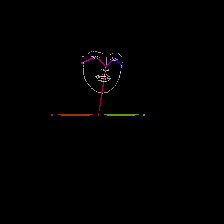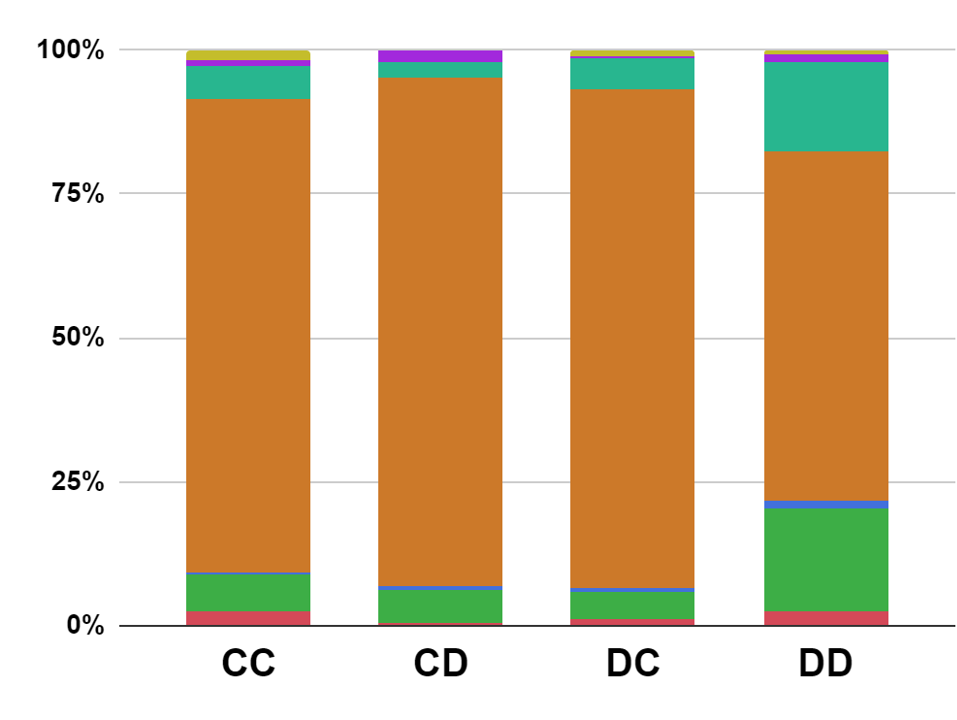Emotion Detection through Body Gesture and Face

0

Sign in to get full access
Overview
- Explores the use of body gestures and facial expressions to detect and analyze human emotions
- Proposes a multimodal deep learning approach that combines visual information from both body and face
- Aims to improve emotion recognition accuracy and real-time performance compared to unimodal approaches
Plain English Explanation
This research paper investigates a new way to detect and understand human emotions using a combination of body gestures and facial expressions. The researchers developed a machine learning system that can analyze both the body and face of a person to determine their emotional state.
The key idea is that by using information from multiple sources (body and face), the system can make more accurate and reliable emotion predictions compared to just looking at the face or body alone. This is similar to how humans often rely on both body language and facial cues to understand how someone is feeling.
The researchers tested their approach on several standard emotion recognition datasets and found that it outperformed previous methods in terms of accuracy and speed. This suggests that this multimodal approach could be useful for real-world applications like social robotics, mental health monitoring, or human-computer interaction, where quickly and precisely detecting emotions is important.
Technical Explanation
The paper presents a multimodal deep learning approach for emotion detection that combines visual information from both body gestures and facial expressions. The proposed architecture consists of two parallel neural networks - one processing the body and one processing the face - whose outputs are then combined to make the final emotion prediction.
Specifically, the body network uses a convolutional neural network (CNN) to extract relevant features from the full-body image, while the face network uses a similar CNN-based approach on the facial region. These two feature representations are then concatenated and fed into a final classification layer to output the detected emotion.
The researchers evaluated their method on popular emotion recognition datasets like KDEF and FERG-DB, and found that it outperformed unimodal (face-only or body-only) baselines in terms of accuracy. They also demonstrated real-time performance, making it suitable for applications that require rapid emotion analysis.
Critical Analysis
The paper provides a compelling demonstration of how combining body and facial information can enhance emotion recognition performance. The multimodal approach seems well-justified, as human emotion often manifests through both physical and facial cues.
However, the paper does not delve deeply into the limitations of the proposed system. For example, it is unclear how the model would perform in real-world settings with more complex, noisy, or occluded inputs. Additionally, the paper does not address potential biases in the training data or how the model might generalize to diverse populations.
Further research could explore the robustness of the multimodal approach, its generalizability, and potential ethical considerations around the deployment of such emotion recognition technologies. Incorporating user feedback and qualitative assessments could also provide valuable insights beyond the quantitative metrics reported in the paper.
Conclusion
This research paper presents a novel multimodal deep learning approach for emotion detection that leverages both body gestures and facial expressions. The results show that this combined approach outperforms unimodal methods in terms of accuracy and real-time performance, suggesting its potential for applications that require rapid and reliable emotion analysis.
While the technical implementation is sound, the paper could be strengthened by a more in-depth discussion of the limitations, potential biases, and broader societal implications of this technology. Overall, the work demonstrates the benefits of integrating multiple modalities for emotion recognition and opens up avenues for further research and development in this field.
This summary was produced with help from an AI and may contain inaccuracies - check out the links to read the original source documents!
Related Papers


0
Emotion Detection through Body Gesture and Face
Haoyang Liu
The project leverages advanced machine and deep learning techniques to address the challenge of emotion recognition by focusing on non-facial cues, specifically hands, body gestures, and gestures. Traditional emotion recognition systems mainly rely on facial expression analysis and often ignore the rich emotional information conveyed through body language. To bridge this gap, this method leverages the Aff-Wild2 and DFEW databases to train and evaluate a model capable of recognizing seven basic emotions (angry, disgust, fear, happiness, sadness, surprise, and neutral) and estimating valence and continuous scales wakeup descriptor. Leverage OpenPose for pose estimation to extract detailed body posture and posture features from images and videos. These features serve as input to state-of-the-art neural network architectures, including ResNet, and ANN for emotion classification, and fully connected layers for valence arousal regression analysis. This bifurcation strategy can solve classification and regression problems in the field of emotion recognition. The project aims to contribute to the field of affective computing by enhancing the ability of machines to interpret and respond to human emotions in a more comprehensive and nuanced way. By integrating multimodal data and cutting-edge computational models, I aspire to develop a system that not only enriches human-computer interaction but also has potential applications in areas as diverse as mental health support, educational technology, and autonomous vehicle systems.
Read more7/16/2024


0
Real Time Emotion Analysis Using Deep Learning for Education, Entertainment, and Beyond
Abhilash Khuntia, Shubham Kale
The significance of emotion detection is increasing in education, entertainment, and various other domains. We are developing a system that can identify and transform facial expressions into emojis to provide immediate feedback.The project consists of two components. Initially, we will employ sophisticated image processing techniques and neural networks to construct a deep learning model capable of precisely categorising facial expressions. Next, we will develop a basic application that records live video using the camera on your device. The app will utilise a sophisticated model to promptly analyse facial expressions and promptly exhibit corresponding emojis.Our objective is to develop a dynamic tool that integrates deep learning and real-time video processing for the purposes of online education, virtual events, gaming, and enhancing user experience. This tool enhances interactions and introduces novel emotional intelligence technologies.
Read more7/8/2024


0
In-Depth Analysis of Emotion Recognition through Knowledge-Based Large Language Models
Bin Han, Cleo Yau, Su Lei, Jonathan Gratch
Emotion recognition in social situations is a complex task that requires integrating information from both facial expressions and the situational context. While traditional approaches to automatic emotion recognition have focused on decontextualized signals, recent research emphasizes the importance of context in shaping emotion perceptions. This paper contributes to the emerging field of context-based emotion recognition by leveraging psychological theories of human emotion perception to inform the design of automated methods. We propose an approach that combines emotion recognition methods with Bayesian Cue Integration (BCI) to integrate emotion inferences from decontextualized facial expressions and contextual knowledge inferred via Large-language Models. We test this approach in the context of interpreting facial expressions during a social task, the prisoner's dilemma. Our results provide clear support for BCI across a range of automatic emotion recognition methods. The best automated method achieved results comparable to human observers, suggesting the potential for this approach to advance the field of affective computing.
Read more8/6/2024


0
HSEmotion Team at the 7th ABAW Challenge: Multi-Task Learning and Compound Facial Expression Recognition
Andrey V. Savchenko
In this paper, we describe the results of the HSEmotion team in two tasks of the seventh Affective Behavior Analysis in-the-wild (ABAW) competition, namely, multi-task learning for simultaneous prediction of facial expression, valence, arousal, and detection of action units, and compound expression recognition. We propose an efficient pipeline based on frame-level facial feature extractors pre-trained in multi-task settings to estimate valence-arousal and basic facial expressions given a facial photo. We ensure the privacy-awareness of our techniques by using the lightweight architectures of neural networks, such as MT-EmotiDDAMFN, MT-EmotiEffNet, and MT-EmotiMobileFaceNet, that can run even on a mobile device without the need to send facial video to a remote server. It was demonstrated that a significant step in improving the overall accuracy is the smoothing of neural network output scores using Gaussian or box filters. It was experimentally demonstrated that such a simple post-processing of predictions from simple blending of two top visual models improves the F1-score of facial expression recognition up to 7%. At the same time, the mean Concordance Correlation Coefficient (CCC) of valence and arousal is increased by up to 1.25 times compared to each model's frame-level predictions. As a result, our final performance score on the validation set from the multi-task learning challenge is 4.5 times higher than the baseline (1.494 vs 0.32).
Read more7/19/2024